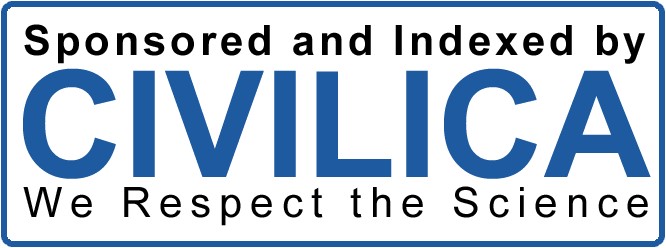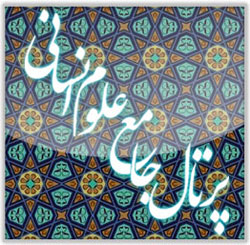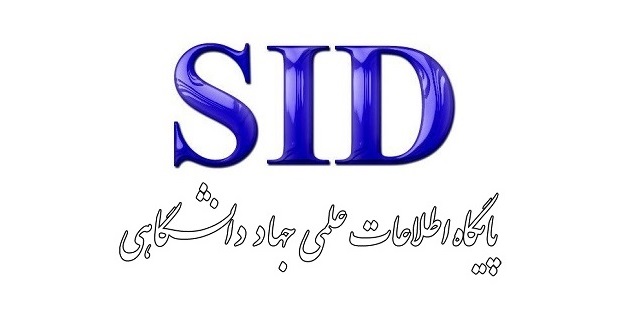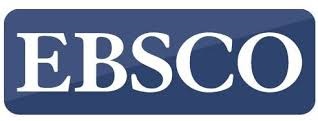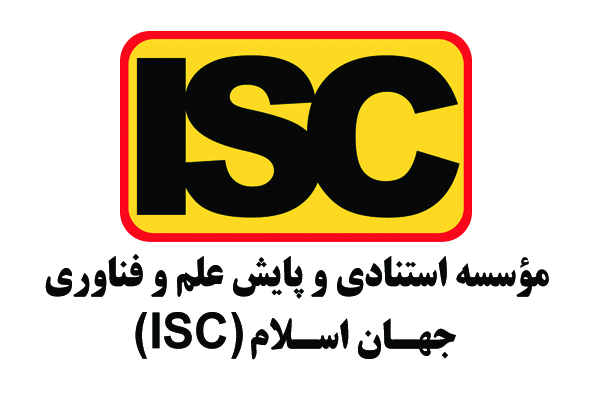نقش جذب دانش در نوآوری و انعطاف پذیری و چابکی واحدهای سازمان صدا و سیمای جمهوری اسلامی ایران: یک مطالعه کیفی
کلمات کلیدی:
ظرفیت جذب, جذب دانش, نوآوری سازمانی, انعطاف پذیری, چابکی سازمانچکیده
این پژوهش با هدف بررسی نقش جذب دانش در ارتقای نوآوری، انعطافپذیری و چابکی سازمان صدا و سیمای جمهوری اسلامی ایران (IRIB) با استفاده از رویکرد کیفی انجام شده است. این مطالعه از نوع کیفی و اکتشافی بوده و از مصاحبههای نیمهساختاریافته برای جمعآوری دادهها استفاده شده است. شرکتکنندگان شامل 26 نفر از مدیران و کارشناسان ارشد سازمان صدا و سیما در تهران بودند که به روش نمونهگیری هدفمند و تا رسیدن به اشباع نظری انتخاب شدند. دادهها با استفاده از تحلیل محتوای کیفی و نرمافزار NVivo تجزیه و تحلیل شده و بر شناسایی مضامین و زیرمضامین مرتبط با جذب دانش، نوآوری و چابکی متمرکز بود. یافتهها سه مقوله اصلی شامل نوآوری، انعطافپذیری و چابکی را شناسایی کردند که هر یک تحت تأثیر ظرفیت جذب دانش سازمان قرار دارند. زیرمقولههای نوآوری شامل بهبود فرآیندها، تقویت خلاقیت، و توسعه محصولات و خدمات جدید بود. انعطافپذیری با مدیریت تغییر، انطباق با نیازهای محیطی و مقاومت در برابر بحرانها مرتبط بود. چابکی نیز به اجرای سریع، انعطاف ساختاری و یادگیری مستمر وابسته بود. جذب دانش بهعنوان عامل تسهیلگر اصلی، نقش کلیدی در یکپارچهسازی ایدههای جدید، افزایش انطباقپذیری و پیشبرد نوآوری داشت. موانعی مانند بروکراسی اداری، ارتباطات نامنسجم، و کمبود انگیزه شناسایی شدند. این پژوهش نقش حیاتی جذب دانش را در ارتقای نوآوری، انعطافپذیری و چابکی در سازمانهای رسانهای مانند صدا و سیما برجسته میکند. با رفع موانع ساختاری، فرهنگی و مدیریتی، این سازمان میتواند به تغییرات محیطی بهتر پاسخ داده و مزیت رقابتی خود را حفظ کند. یافتهها بینشی کاربردی برای تقویت فرهنگ یادگیری و اتخاذ رویکردهای انعطافپذیر و نوآورانه ارائه میدهند.
دانلودها
مراجع
Cho, H. E., Jeong, I., Kim, E. M., & Cho, J. (2022). Achieving Superior Performance in International Markets: The Roles of
Organizational Agility and Absorptive Capacity. Journal of Business and Industrial Marketing, 38(4), 736-750.
https://doi.org/10.1108/jbim-09-2021-0425
Ebrahimpour, H., Khalili, H., Habibian, S., & Saadatmand, M. (2012). A survey of the relationship between job
charactacteristics and organizational citizenship behavior in IRIB Training center (According to Hack man and Oldham
model). Transformation Managemet Journal, 3(1), 90. https://www.magiran.com/paper/947766
Elhadidy, I. (2024). The Impact of Humble Leadership on Employee Agility: Unveiling the Mediating Role of Employees'
Self-Efficacy. International Journal of Research in Business and Social Science (2147-4478), 13(1), 200-209.
https://doi.org/10.20525/ijrbs.v13i1.3145
Ghanbary, S., & Sharifi, S. M. (2020). Presenting a Framework for Human Resources Diversity in IRIB. Journal of
Interdisciplinary Studies in Communication and Media, 3(9), 39-11. https://doi.org/10.22034/jiscm.2020.239835.1123
Hustad, E., Nakayama, M., Sutcliffe, N., & Beckfield, M. (2022). Knowledge Mobilization in Agile Information Systems
Projects: A Literature Analysis. European Conference on Knowledge Management, 23(1), 533-541.
https://doi.org/10.34190/eckm.23.1.561
Junita, A. (2021). Agile HR Strategies: Prerequisite of Business Competitiveness in a Dynamic Environment.
https://doi.org/10.4108/eai.9-10-2020.2304778
Kalenda, M., Hyna, P., & Rossi, B. (2018). Scaling Agile in Large Organizations: Practices, Challenges, and Success Factors.
Journal of Software Evolution and Process, 30(10). https://doi.org/10.1002/smr.1954
Khan, S. H., Majid, A., & Yasir, M. (2020). Strategic Renewal of SMEs: The Impact of Social Capital, Strategic Agility and
Absorptive Capacity. Management Decision, 59(8), 1877-1894. https://doi.org/10.1108/md-12-2019-1722
Lungu, M. F. (2020). Factors Determining Company Performance in the IT Industry. Management & Marketing, 15(1), 59-77.
https://doi.org/10.2478/mmcks-2020-0004
Mao, H., Liu, S., Zhang, J., Zhang, Y., & Gong, Y. (2020). Information Technology Competency and Organizational Agility:
Roles of Absorptive Capacity and Information Intensity. Information Technology and People, 34(1), 421-451.
https://doi.org/10.1108/itp-12-2018-0560
Peliarachchi, A. (2023). A-Itil, ITIL and Agile Based Advanced Framework for Managing Software and IT Related Bau: A
Systematic Literature Review. Sljo-J-Jdrra, 1(1), 84-97. https://doi.org/10.4038/jdrra.v1i1.8
Rafi, N., Ahmed, A., Shafique, I., & Kalyar, M. N. (2021). Knowledge Management Capabilities and Organizational Agility
as Liaisons of Business Performance. South Asian Journal of Business Studies, 11(4), 397-417.
https://doi.org/10.1108/sajbs-05-2020-0145
Şahİn, A. E. (2023). Loji̇sti̇k Performans Ve Soğurma Kapasi̇tesi̇: Strateji̇j Çevi̇kli̇ği̇n Araci Rolü. 3(2), 51-69.
https://doi.org/10.61349/iesbad.1403203
Salavatian , S., & Mansouri , H. (2017). Proposing Conceptual Model for Creativity and Innovation Management in Content
production for IRIB TV. Journal of Innovation and Creativity in Human Science, 6(23), 35-76.
https://www.magiran.com/paper/1670493
Salmani, S., Hakim Ara, M. A., & Razi, H. (2016). Soundscape and Ways Out of the Challenges Ahead in Competition with
the New Media Islamic Republic of Iran Broadcasting University, Faculty of Social Communication Sciences].
https://noordoc.ir/thesis/123888
Sánchez, A. M., Pérez-Pérez, M., & Oliva, S. V. (2019). Absorptive Capacity and Technology: Influences on Innovative Firms.
Management Research the Journal of the Iberoamerican Academy of Management, 17(3), 250-265.
https://doi.org/10.1108/mrjiam-02-2018-0817
Shakeri Nejad, M., Ashari, M., Salavatiyan, S., & Farokhnezhad, R. (2022). Barriers to Implementing Media Policies in IRIB
(Islamic Republic of Iran Broadcasting). Quarterly Journal of Strategic Studies in Culture(7), 55-76.
Silva, R. D. (2023). Change Agility: A Paradigm of Change Acceptance for Organization Sustainability. Management Journal
for Advanced Research, 3(6), 51-69. https://doi.org/10.54741/mjar.3.6.6
Stei, G. (2023). Systematic Literature Review on Agility in Knowledge-Intensive Organizations. European Conference on
Knowledge Management, 24(2), 1615-1622. https://doi.org/10.34190/eckm.24.2.1289
Tashakkori, M., Nasrollahi, A., & Dadgaran, M. (2021). The Role of Modern Communication Technologies in Streamlining
Radio and Television Production Processes: A Case Study of the Islamic Republic of Iran Broadcasting Organization.
Visual and Audio Media, 37, 165-198.
Tirgar Fakheri, F., Jafari, A., Ahmadi, A., & Jahanshahi, O. (2021). Identifying Influential Factors Affecting the Future of IRIN
Over 10-Year Horizon. Quarterly Scientific Journal of Audio-Visual Media, 14(36), 33-59.
https://doi.org/10.22085/javm.2021.250656.1599
Villa, T. (2023). The Agile Knowledge Projector: Enhancing the Adaptive Creation of Knowledge. European Conference on
Knowledge Management, 24(2), 1677-1682. https://doi.org/10.34190/eckm.24.2.1225
Wicaksana, S. A., & Isfania, R. (2022). Building Organizational Agility Through Knowledge Sharing and Organizational
Culture in Non-Departmental Government Agencies. Jurnal Aplikasi Bisnis Dan Manajemen.
https://doi.org/10.17358/jabm.8.3.749
Wu, Z., & Qu, X. (2018). The New Enlightenment of Absorptive Capacity Theory. https://doi.org/10.2991/icmess-18.2018.249
Yang, J. (2021). Unleashing the Dynamics of Triple-a Capabilities: A Dynamic Ambidexterity View. Industrial Management
& Data Systems, 121(12), 2595-2613. https://doi.org/10.1108/imds-02-2021-0086
Yang, Z., Nguyen, V. T., & Le, P. B. (2018). Knowledge Sharing Serves as a Mediator Between Collaborative Culture and
Innovation Capability: An Empirical Research. Journal of Business and Industrial Marketing, 33(7), 958-969.
https://doi.org/10.1108/jbim-10-2017-0245
Yasamin, S., Nemati Anarki, D., Danei, A., & Rashidi, E. (2023). Designing a Model of Operational Management in Media
Organizations During A Disease Epidemic (Case: IRIB in Corona Pandemic). Communication Research, 30(114), 33-59.

دانلود
چاپ شده
ارسال
بازنگری
پذیرش
شماره
نوع مقاله
مجوز
حق نشر 2025 تکنولوژی در کارآفرینی و مدیریت استراتژیک

این پروژه تحت مجوز بین المللی Creative Commons Attribution-NonCommercial 4.0 می باشد.



